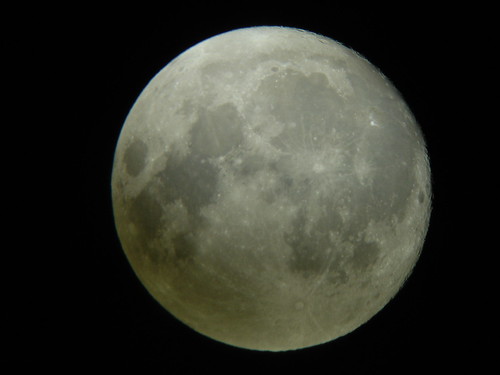I went grocery shopping today at the Safeway in Milpitas, CA. I noticed a disturbing trend: product packages are getting smaller. My first thought was that they’re trying to keep the sticker shock down in this era of rising prices (when I asked the checker about the sizes, he said something similar). But for at least three products I buy on a semi-regular basis, the boxes are getting smaller. And just in case you think it’s my imagination, Consumerist.com regularly reports on the Grocery Shrink Ray.
Breyer’s ice cream now comes in a 1.42 l container; previously it was 1.66 l. Lucerne (Safeway’s brand) yogurt comes in 170 g cups; previously they were 227 g. And I couldn’t find the Kellog’s cereal I’ve been buying lately in the 473 g box, just a 340 g box.
Of these three products, I can only accurately compare the price of the yogurt, because Safeway still had a few units of the larger package on the shelf (and I threw away my past receipts). They were listed as $0.142/oz for the smaller size, and $0.106/oz for the larger.
What’s Wrong with This?
I generally hate marketing, but I’ve been saying, recently more often, that what I really hate is being tricked into buying something. I don’t like large-print low prices accompanied by small-print associated fees. I hate being nickle-and-dimed. I believe in itemization of costs, and price transparency, but don’t attempt to lure me in with anything but the final price of the basic product (in a reasonably usable configuration).
That aside, there’s something more ridiculous going on here. The general consensus is that food prices are going up because energy prices (specifically, fossil fuel prices) are going up. I don’t have hard data, but I suspect that’s a fairly accurate assumption. Part of the price we pay for the food we eat is the cost of shipping it from the manufacturer to the store shelves, and that takes fossil fuels; if the price of oil goes up, so does the cost of shipping, and so does the price of our food.
Now consider that most packaging has a certain amount of overhead associated with it. That is, if I take some number of cups of yogurt or tubs of ice cream and stack them in a box, a certain amount of the space in that box is wasted—it’s the space between the individual containers. Even the cereal box, which can pack very efficiently, has space wasted inside it. Generally, the wasted space associated with packaging doesn’t change in proportion to the usable volume of the packaging. Usually, as packages get smaller, more of that package’s boxed volume is wasted.
For example, the 227 g yogurt container is 80 mm in diameter and 84 mm tall, and holds about 210 ml of yogurt. The smallest (idealized) box that can hold that is therefore 80 mm × 80 mm × 84 mm, or 538 ml, 39% efficient. The 170 g container is 80 mm in diameter (same as the larger) and 71 mm tall, and holds about 150 ml of yogurt. Its bounding box is 80 mm × 80 mm × 71 mm, or 454 ml, 33% efficient.
| Qty |
Product Volume |
Bounding Box Volume |
Efficiency |
Overhead |
| 227 g (8 oz) |
210 ml |
538 ml |
39% |
61% |
| 170 g (6 oz) |
150 ml |
454 ml |
33% |
67% |
Hopefully you can see where I’m headed. Oil prices pushed up food prices. Marketers, fearing that this would discourage sales, reduced the actual quantity of product sold so that the price tags wouldn’t appear to rise, but in so doing reduced the packing efficiency of the product. Now they have to make more trips to ship the same amount of product, exacerbating the problem (and wasting precious resources in the process). Not to mention the fact that I now have to go to the store more often, and my electric-motorcycle-to-be will likely not be the vehicle I take. And how much did it cost to retool all those factories?
The problems of packaging efficiency aren’t new. Never having done this exercise before (measuring yogurt cups), though, I never realized how egregious it really is. 33%? Surely we can do better than that. And if Safeway shipped their product in electric trucks powered by the Sun and wind, well, it would be just that much better.





